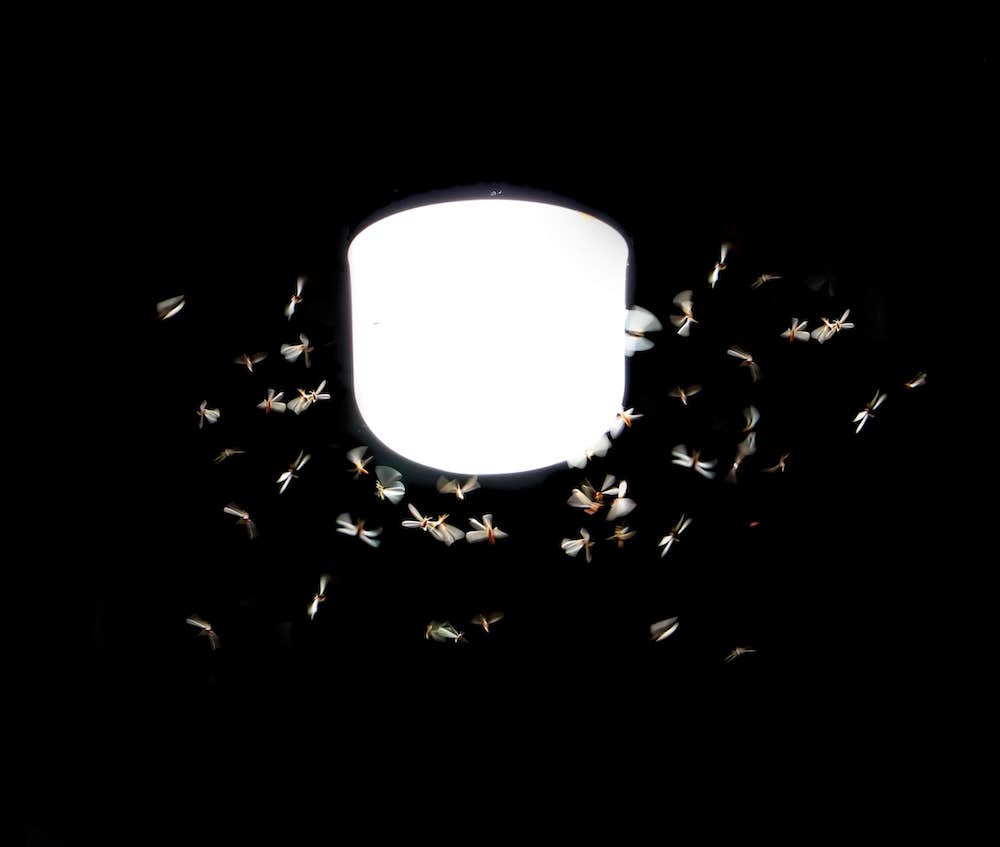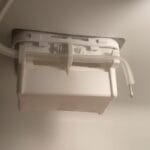To stop bugs from triggering motion cameras, adjust the sensitivity settings and use insect repellent lights. Positioning cameras away from light sources also helps reduce bug attractions.
Dealing with false alarms from your motion cameras due to bugs can be a real headache for homeowners and security enthusiasts alike. These tiny intruders, drawn to the infrared light or warmth emitted by the cameras, can trigger alerts all night long, flooding your notifications with false alarms.
An effective strategy involves a blend of technological adjustments and preventive measures. By tweaking camera settings, such as lowering sensitivity or defining motion zones, you can significantly reduce unwanted triggers. Moreover, incorporating bug-repellent lighting or physical barriers adds an extra layer of defense, ensuring that your security system focuses on genuine threats rather than pesky insects. This approach not only enhances the accuracy of your motion detection but also extends the life of your equipment by avoiding constant activations.
Introduction To Motion Camera Nuisances
Modern homes often use motion cameras for security. These devices detect movement and alert homeowners. Yet, bugs and small animals can trigger false alarms. This can be annoying and reduce trust in your security system.
Common Triggers For False Alarms
- Small insects flying close to the camera
- Spiders weaving webs over the lens
- Moving branches or shadows during windy days
- Light reflections and lens flare
- Pets moving in the detection zone
Impact On Security And Peace Of Mind
False alarms from motion cameras can be stressful. They can wake you at night. They can make you worry when you’re away. Over time, you might ignore real alerts. This puts your home and safety at risk.
Identifying Bug Attraction Factors
Motion cameras often capture unwanted guests: bugs. Understanding what draws these critters in is key to keeping your camera’s lens clear. Let’s explore the main attractions for these six-legged intruders.
Types Of Bugs Commonly Triggering Cameras
- Moths: Attracted to light, they flutter by lenses.
- Spiders: They spin webs, sensing camera heat.
- Flies: Buzzing close, they’re lured by infrared light.
- Beetles: Creeping closer, shiny surfaces catch their eye.
Environmental Conditions Drawing Bugs In
Bugs thrive in certain conditions. Your camera might be in the perfect spot.
| Condition | Attraction |
|---|---|
| Lighting | Bugs love bright areas, especially at night. |
| Heat | Electronic devices emit warmth, inviting bugs. |
| Water | Moist spots near cameras attract thirsty insects. |
| Plants | Vegetation can harbor bugs, leading them to cameras. |
Strategic Camera Placement
Motion cameras offer security and peace of mind. Yet, bugs can trigger false alarms. Smart camera placement reduces these unwanted alerts. Below, we explore how to position your camera wisely.
Evaluating Optimal Locations
Choose elevated areas for your camera. High spots keep cameras out of bug zones. Ensure clear views of the area you wish to monitor. Obstructions can cause issues.
Test different angles before final installation. Temporary setup helps to find the best position. Aim for minimal direct light exposure. It attracts fewer insects.
Avoiding Bug Hotspots
- Stay away from lights. Insects gather around them.
- Keep distance from plants. Greenery draws bugs.
- Don’t mount near water. Puddles and ponds are insect magnets.
- Consider wind direction. It influences bug movement.
Follow these tips for effective camera placement. It reduces false alerts and captures true events.

Credit: alfred.camera
Choosing The Right Camera
Choosing the right camera is key to stopping bugs from triggering it. The right features and technologies can make all the difference. Let’s explore what to look for in a camera.
Features To Look For
- High-resolution: Clear images help distinguish bugs from real threats.
- Adjustable sensitivity: This lets you tweak motion detection settings.
- Night vision: Bugs are active at night. Good night vision is crucial.
- Wide angle lens: Covers more area, reducing false alarms.
Bug Deterrent Technologies
Some cameras come with specific technologies to keep bugs away. These include:
- Infrared light filters: Minimize attractions for bugs.
- Physical designs: Cameras with smooth surfaces deter spiders and webs.
- Software solutions: Some cameras ignore small, fast-moving objects.
Choosing a camera with these features will save you a lot of trouble. Always read reviews and compare models before buying.
Physical Barriers And Shields
Physical Barriers and Shields play a crucial role in preventing bugs from triggering motion cameras. They provide a simple yet effective solution. Let’s explore how to implement these barriers.
Implementing Mesh And Covers
Bugs often mistake camera infrared lights for sunlight, attracting them. By using meshes and covers, we can keep these tiny intruders at bay. Here’s how:
- Choose a fine mesh that allows light through but keeps bugs out.
- Ensure the mesh fits snugly around the camera. This prevents gaps.
- Opt for weather-resistant materials. They last longer outdoors.
Some camera brands offer custom covers. Check for compatibility.
Diy Solutions For Bug Proofing
Not all solutions require purchases. You can create effective barriers at home. Here are some DIY methods:
- Clear plastic bottles can act as makeshift covers. Cut them to fit.
- Apply a thin layer of vaseline on the camera housing. It deters bugs.
- Use essential oils like citronella around the camera. Bugs dislike these smells.
Remember, regular maintenance is key. Clean your barriers often.
Adjusting Camera Settings
Modern motion cameras are smart. Yet, they often mistake bugs for intruders. Proper settings can reduce false alarms. This guide explains how to adjust camera settings effectively.
Sensitivity Adjustments
Lowering sensitivity helps. Start by accessing the camera’s settings menu. Look for ‘sensitivity’ or ‘motion detection’ options. Follow these steps:
- Find the settings gear icon.
- Navigate to ‘Motion Settings’.
- Adjust the slider to a lower setting.
- Test different levels at night.
Remember, too low may miss actual threats. Find a balance.
Software Filters And Algorithms
Advanced cameras use software to distinguish threats. Update your camera’s firmware first. Then, enable advanced features:
- Look for ‘software filtering’ in the menu.
- Enable ‘bug filter’ if available.
- Choose ‘AI detection’ for smarter analysis.
These settings help your camera ignore small insects. They ensure only true motion triggers an alert.
Attracting Bugs Elsewhere
Are bugs setting off your motion camera at night? You can keep them away. Let’s learn how to attract bugs elsewhere.
Using Light To Divert Attention
Bugs love light. It’s like a magnet for them. But you can use this to your advantage. Place a light source away from the camera. This will draw bugs towards the new light. Use yellow LED bulbs. They are less appealing to bugs. Set up the light at a good distance. Make sure it’s brighter than the camera’s light. This will shift the bug’s focus.
Natural Repellents And Deterrents
Bugs dislike certain smells and substances. Use these natural repellents to keep them away. Plant citronella, lavender, or marigolds near the camera. These plants are known bug deterrents. Make a DIY spray. Mix water with essential oils like eucalyptus or peppermint. Spray it around the camera area. Reapply the spray after rain.
Regular Maintenance And Cleaning
Keeping bugs away from motion cameras is crucial. Regular upkeep ensures cameras work well. Dirt and bugs can trigger false alarms. A clean sensor reduces this risk.
Schedule For Upkeep
Set a routine to check and clean your cameras. This prevents bug interference. Aim for monthly inspections. Adjust the schedule based on the area’s bug activity. Note the dates of cleaning.
- Monthly checks – Inspect and clean lenses and sensors.
- Seasonal adjustments – Increase frequency in warm months.
- Keep records – Log maintenance activities for reference.
Best Practices For Cleaning Sensors
Proper cleaning methods protect camera sensors. Use the right tools and solutions for cleaning. Avoid harsh chemicals that can damage the lens.
- Turn off cameras before cleaning.
- Soft brush – Gently remove debris.
- Microfiber cloth – Wipe lenses carefully.
- Alcohol wipes – Use for stubborn spots.
Repeat the cleaning process if needed. Ensure no residue remains. Clean cameras result in fewer false triggers.
Leveraging Professional Help
Leveraging Professional Help can be crucial when DIY solutions fail to keep bugs from activating motion cameras. Experts offer tailored strategies and advanced technology to combat this nuisance effectively.
When To Call An Expert
Knowing the right time to seek professional assistance is essential for maintaining security systems. If persistent false alarms from insects become a regular issue, it’s time to consult an expert. Call for help if:
- Home remedies fail: You’ve tried DIY tips without success.
- False alarms increase: Bug-triggered alerts are more frequent.
- System damage: Bugs cause physical harm to cameras.
Services Offered By Security Companies
Security firms offer a range of services to keep bugs at bay. They include:
| Service | Description |
|---|---|
| Camera Positioning | Adjusting angles to reduce false triggers. |
| Insect Repellent Solutions | Installing bug deterrents around cameras. |
| Software Calibration | Updating settings to differentiate movements. |
| Regular Maintenance | Conducting routine checks and cleanings. |
Experts help you find the perfect balance between security and convenience. They ensure cameras only capture true motion events. With their assistance, your home stays safe without constant interruptions.

Credit: www.reddit.com
Frequently Asked Questions
How Do Motion Cameras Detect Movement?
Motion cameras typically use infrared sensors or image comparison algorithms to detect changes in the visual field, signaling movement.
Can Bugs Activate Motion Cameras?
Yes, bugs can trigger motion cameras if they move across the camera’s field of view or close to its sensors.
How To Prevent False Triggers In Motion Cameras?
Reducing sensitivity settings and strategically positioning cameras away from bug-attracting lights can minimize false alarms.
Do Weather Conditions Affect Motion Camera Sensitivity?
Certain weather conditions, like rain or wind, can affect motion camera sensitivity, potentially causing false triggers.
What Are The Best Practices For Motion Camera Placement?
Ideal motion camera placement is high, angled, and away from direct light sources to reduce false triggers and improve detection accuracy.
Conclusion
Wrapping up, securing your motion cameras from pesky bugs is straightforward. By implementing the tips shared, you’ll enjoy a clear view and fewer false alarms. Stay vigilant and keep your outdoor spaces bug-free for optimal camera performance. Ready to take action?
Your peace of mind awaits.




